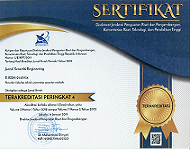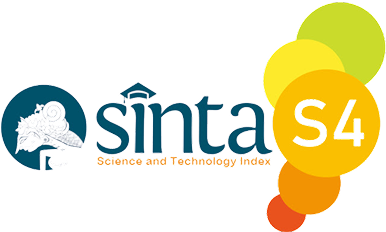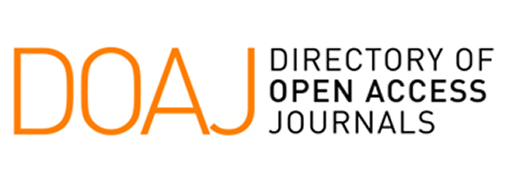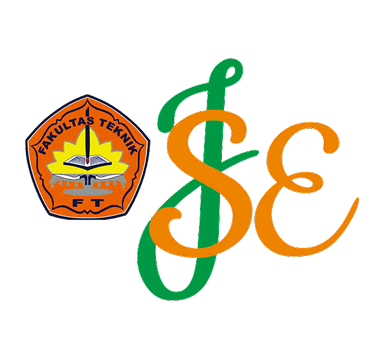Pemanfaatan Limbah Ampas Fermentasi dan Ampas Kecap sebagai Pakan Alternatif serta Dampaknya terhadap Kualitas Air Kolam
Keywords:
pakan alternatif, ampas kecap, kualitas air, pertumbuhan ikanAbstract
This study aims to utilize fermented residue and soy sauce by-products from soy sauce production as raw materials for alternative fish feed, as well as to evaluate their effects on fish growth and water quality in aquaculture ponds. The feed formulation consisted of soybean waste (25%), rejected powdered milk (5%, 7.5%, and 10%), fine bran (18%), EM4 (2%), molasses (5%), tapioca flour (10%), fish meal (20%), and sufficient water. The study was conducted using three treatment variations based on the percentage of rejected powdered milk. Observed parameters included fish weight gain and water quality, covering temperature, pH, and TDS. The results showed that the alternative feed made from soy sauce production waste supported fish growth, particularly the formulation containing soy sauce residue and fermented residue with 5% rejected powdered milk. Overall, the pond water quality remained within the acceptable range for fish farming, although fluctuations in pH and temperature were observed towards the end of the study. Therefore, fermented residue and soy sauce by-products have the potential to be a sustainable, cost-effective, and environmentally friendly fish feed solution.
References
[1] Perius, Nutrisi Ikan. 2011. [Online]. Available: https://yulfiperius.files.wordpress.com/2011/07/1 pendahuluan.pdf
[2] R. Zaenuri, B. Suharto, and A. T. S. Haji, “Kualitas Pakan Ikan Berbentuk Pelet Dari Limbah Pertanian,” J. Sumberd. Alam Lingkung., pp. 31–36, 2014.
[3] KKP, Pedoman Penyusunan Pakan Ikan Hias. 2020.
[4] Z. Oktaviani and N. Hendrasarie, “Efektivitas Konsorsium Mikroalga Chlorella sp . dan Mikroba Indigenous Dalam Menurunkan BOD , COD , dan TN Air Limbah Industri Kecap Menggunakan MBBR,” vol. IX, no. 4, pp. 10724–10730, 2024.
[5] N. Hendrasarie, A. N. Ramadhani, F. Rosariawari, and A. Amalia, “Hybrid Biofilter-Adsorption Performance to Removal Organic Matter and Color on Black Soybean Sauce Wastewater,” IOP Conf. Ser. Earth Environ. Sci., vol. 1454, no. 1, 2025, doi: 10.1088/1755-1315/1454/1/012030.
[6] H. Nicholas, A. B. Citra, and Y. A. Saputra, “Proses Pengolahan Kecap Manis di Perusahaan Kecap Cap Akur Salatiga,” 2021.
[7] Y. Putri, C. N. Thasmi, M. Adam, and N. -, “Efek Pemberian Ampas Kedelai Nonfermentasi Dan Yang Difermentasi Terhadap Jumlah Folikel Telur Ayam Kampung (Gallus domesticus),” J. Med. Vet., vol. 7, no. 2, pp. 75–78, 2013, doi: 10.21157/j.med.vet..v7i2.2934.
[8] A. D. Aqsa, K. Kiramang, and M. N. Hidayat, “Profil Organ Dalam Ayam Pedaging (Broiler) yang Diberi Tepung Daun Sirih (Pipper Betle Linn) Sebagai Imbuhan Pakan,” Ilmu dan Ind. Perternakan, vol. 3, no. 1, 2016.
[9] M. N. Hidayat, “Potensi Susu Bubuk Afkir sebagai aditif Pakan Terhadap Bobot Badan Akhir dan Kualitas Karkas Broiler,” J. Peternak. Lokal, vol. 4, no. 2, pp. 52–59, 2022, doi: 10.46918/peternakan.v4i2.1435.
[10] Satriaji F. V. and Hendrasarie N., “Spent Bleaching Earth sebagai Adsorben untuk Menyisihkan Krom dan Warna pada Limbah Cair Batik,” J. Serambi Eng., vol. 9, no. 1, pp. 7642–7653, 2023, doi: 10.32672/jse.v9i1.722.
[11] M. R. P. Anugrah and N. Hendrasarie, “Uji Efektifitas Sampah Pangan Dan Non Pangan Dalam Menghasilkan Bioetanol Generasi Kedua,” Envirous, vol. 1, no. 2, pp. 32–40, 2021.
[12] D. K. Kurniawan and N. Hendrasarie, “Pemanfaatan Limbah Produk Kayu Sebagai Bahan Pembuatan Bioetanol,” Envirous, vol. 3, no. 1, pp. 1–9, 2023, doi: 10.33005/envirous.v3i1.56.
[13] P. Moyle and Jj. J. Cech, Fishes: An Introduction to Ichtyology 5th edition. New Jersey, 2004.
[14] C. P. ADI and A. SURYANA, “Pola Pertumbuhan Ikan Nila Oreochromis Niloticus Di Fase Pendederan,” Knowl. J. Inov. Has. Penelit. dan Pengemb., vol. 3, no. 2, pp. 147–158, 2023, doi: 10.51878/knowledge.v3i2.2372.
[15] M. I. Effendie, Biologi Perikanan. Yogyakarta: Yayasan Pustaka Nusatama, 1997.
[16] H. Effendi, Telaah Kualitas Air bagi Pengelolaan Sumber Daya dan Lingkungan Perairan. Yogyakarta, 2003.
[17] M. Nasir and M. Khalil, “Pengaruh penggunaan beberapa jenis filter alami terhadap pertumbuhan, sintasan dan,” Aquat. Sci. J., vol. 3, no. 1, pp. 33–39, 2016.
[18] M. S. Yusal and A. Hasyim, “Kajian Kualitas Air Berdasarkan Keanekaragaman Meiofauna dan Parameter Fisika-Kimia di Pesisir Losari, Makassar,” J. Ilmu Lingkung., vol. 20, no. 1, pp. 45–57, 2022, doi: 10.14710/jil.20.1.45-57.
Downloads
Published
Issue
Section
License
Copyright (c) 2025 Amelia Novita Kartikasari, Novirina Hendrasarie (Author)

This work is licensed under a Creative Commons Attribution 4.0 International License.












